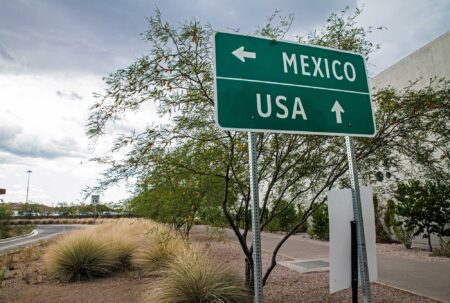Beauty is in the eye of the beholder, the proverb observes, which explains why your brand preference generally influences your view of tractor beauty. There are a great many examples of aesthetically pleasing tractors.
The Farmall 1206, the Deere 30 Series, the Massey-Harris 101, the Minnie-Mo UDLX, and the Oliver 70 are just a few of the lovelies the industry has fashioned.
But for sheer striking good looks, the Graham-Bradley tractor owns eyeball honors as the most glamorous tractor of all time.
Starting with that spectacular grille sweeping back to its streamlined side curtains – all touched off with a striking red-and- silver paint scheme – the Graham-Bradley is a spectator-stopper at any tractor show.
Those good looks disguise a bona fide plow-pulling pony. The Graham-Bradley was a workhorse in the field. It also tendered quite a few advances, many of which were otherwise unavailable in its day. But for all its attributes, the Graham- Bradley was a failure.
In production a mere three years, the tractor hardly made a dent in the market. The cause of its demise was not lack of performance.
Rather, the tractor was a sideline business for a car manufacturer struggling to make ends meet at the end of the Great Depression.
Farm Boy Manufacturers
The story of the Graham-Bradley begins with the Graham boys of Washington, Indiana. Joseph, Robert, and Ray Graham left the farm and took to manufacturing in nearby Evansville, Indiana. Their first venture was making glass. Their company made its mark by developing the technique of manufacturing bottles upside down.
This permitted the molten glass to build up around the bottle’s crown, strengthening it enough to hold a cap instead of a cork.
Dave Mowitz
Next They Took to Cars
The Graham boys later built kits to modify Ford Model T’s into trucks. This led them to build trucks for Dodge Brothers, who bought out their company in 1927. The Graham brothers continued on as Dodge Brothers’ executives until they struck out on their own in 1927, buying the Paige-Detroit Motors.
Renamed Graham-Paige Motors, the brothers took to building cars. Graham-Paige autos did well until sales hit a brick wall, due to the Great Depression. The company struggled through those dark days, then it found a possible solution to its woes in high auto and tractor style.
Northup’s Design Touch
Employing the genius of famed car designer Amos Northup of Murray Body, Graham-Paige launched its highly stylized Spirit of Motion cars in 1938. Actually, Northup died before that design was completed. So it’s believed that the final design was finished by Graham engineers.
The Spirit of Motion distinctive style garnered praise in theAmerican press and recognition at the prestigious Concours D’Elegance in Paris.
Certainly one of the best examples of sharknose streamlining in autos, this design approach was employed in the creation of the Graham-Bradley tractor. The first word of that tractor reached trade publications in the summer of 1937.
Dave Mowitz
The Sears Connection
Early the following year, the Graham-Bradley Model 503 began arriving in Sears, Roebuck and Company farm stores. Graham-Paige recognized that it lacked distribution in the farm market.
Wanting to hit the market running, it negotiated with Sears to place its tractors in selected stores. This explains the marriage of the Bradley name (commonly applied to Sears farm equipment) to the Graham moniker.
Sears executives welcomed the tractor believing, like the Graham brothers, that farmers were ready for an advanced machine to sweep aside the doldrums of the Great Depression. Thus, the tractor would be “built by Graham, equipped by Bradley, guaranteed by Sears,” as the press proclaimed at the time.
Sears “mad men” touted the machine as “the most beautiful tractor ever built.” A sale brochure added that it was the “best looking, sweetest running, and most powerful two-plow job you ever saw.” Those claims were not deceiving.
The tractor’s Graham-Paige power plant (built for them by Continental) purred at work due to six cylinders running at an operating speed of 1,500 rpm. In comparison, a great many tractors of this time barely broke 1,000 rpm.
Unique Features
When evaluated at the Nebraska Tractor Test in 1938, it turned out a respectable 28 hp. at the belt pulley, which was unique since it was driven from the rear of the transmission. By locking out the final drive with a lever, all transmission speeds (including reverse) were available at the belt pulley.
Such innovation marked the tractor throughout. For example, it offered, as standard equipment, such uncommon (for the time) features as a fully adjustable rear tread, operator’s platform, a full array of gauges, a cushioned seat, and adjustable drawbar.
A Sudden Demise
Those offerings and the introduction of a wide-front tractor, wasn’t enough to get the Graham-Bradley off the ground. Sales were sluggish, and the relationship with Sears soured. In 1938, Robert Graham announced plans to build 10,000 tractors annually. But by 1940, the last Graham-Bradley was produced before even 2,000 tractors were made. That same year, the Graham brothers left the tractor market for good.
That cost agriculture a handsome tractor. But the Graham boys made out OK. They eventually sold Graham- Paige Motors and took to buying land in New York, where their holdings included such landmarks as Madison Square Garden and Pennsylvania Station.


:max_bytes(150000):strip_icc()/Between-Corn-Rows-POV-Deep-Natalina-Sents-Bausch-dca1b82edce44bdd97dda3b76312e719.jpg)




:max_bytes(150000):strip_icc()/graham-bradley3-42f534178fa34c23b67b506a48fe3298.jpg)


:max_bytes(150000):strip_icc()/corn20row20medium20shot2027799306935_11d2bf8d68_c-bd8d55a13c9240b6a58d961346b384c5.jpg)
:max_bytes(150000):strip_icc()/100875326_pigs-205487d9fc054eaea6fab279218b5d6a.jpg)
